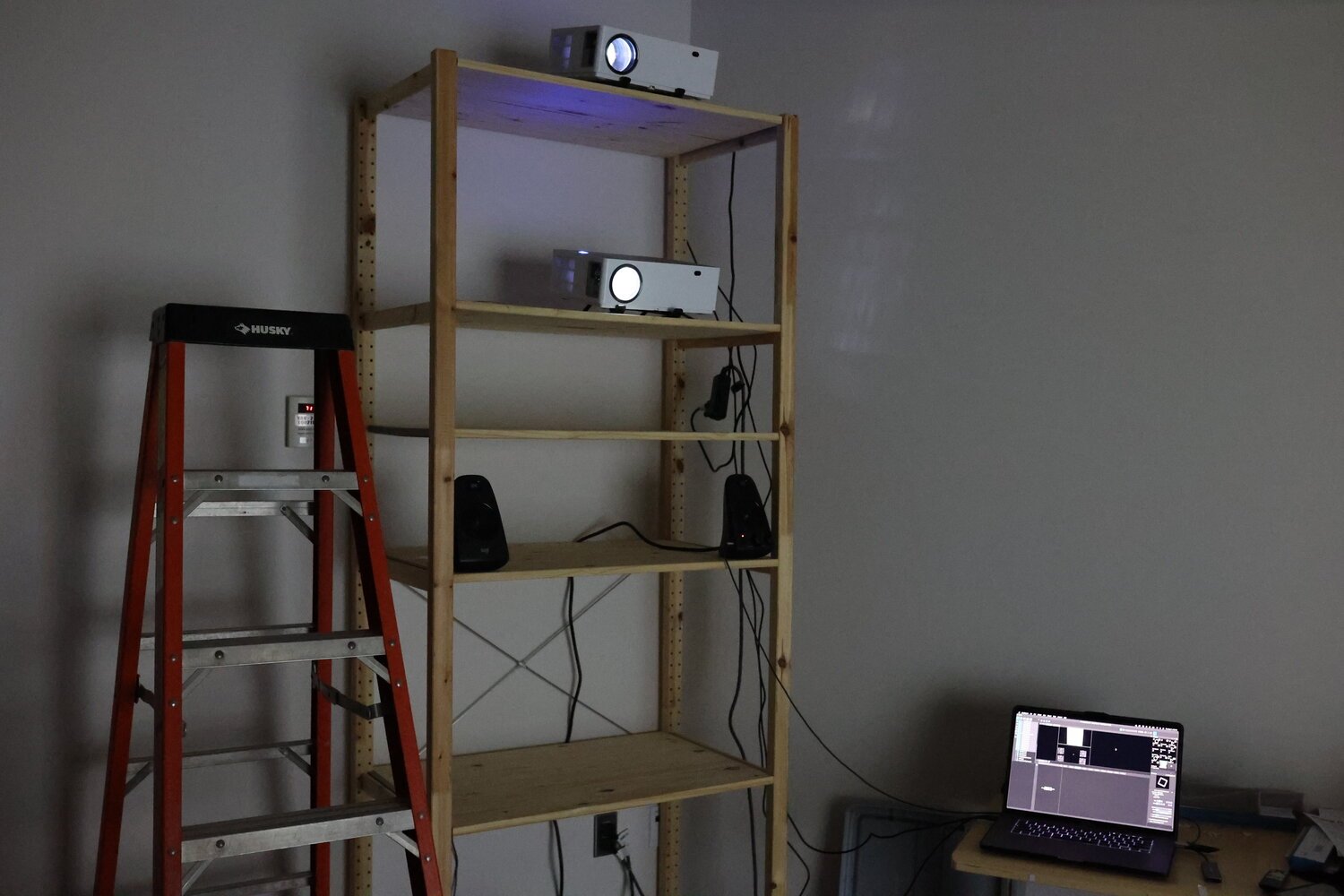DANCE IT OUT!
DANCE IT OUT! is an experiential audiovisual installation conceptualized and created in a four-week timeframe with the intention of providing an environment that encourages the engagement and expression of dance. Given the restrictions on concerts, clubs, and other dance-oriented events due to the COVID-19 pandemic, I wanted to create an experience that would supplement for that absence of opportunity to engage in those experiential environments–allowing for viewers to indulge in an experience that would provide them the opportunity to dance it out. Whether taking center stage and facing the lights or watching your shadow dance on the wall along with the projected visuals, there is no wrong way to express yourself in this installation. Dance is something that can be experienced and expressed through the most animated of movements, the most reserved of movements, and/or anything in between–no matter how you want to express yourself, there is no wrong way to dance!
Special thanks to Elle Hong, Brittney Banaei, and Donna Mejia for taking the time to share their love of dance with me in my project.
The music used is MYB by Oliver, and was used solely for the educational purpose of this project–all rights for the music are reserved to Oliver and their respective entitites.
PROCESS
The primary inspiration for the conceptualization of DANCE IT OUT! came from catwalks, dance shows, concerts visuals, dancing games, and other media/experiences that showcase, encourage, and promote dance, performance, and self-expression. Due to the fact that COVID-19 has detrimentally impacted these kinds of experiences and rendered them largely inaccessible, I wanted to create an experience that would allow for dance and performance-oriented self-expression in a COVID-safe environment.
To fulfill this, I secured an enclosed space that would allow for lighting and volume control, as well as mitigate traffic and allow for social distancing considerations.
Conceptual rendering of what the envisioned experience space would look like–with the positions of projectors, the performance area, and the wall-mounted boxes.
DANCE IT OUT! utilizes a laptop that is hooked up to projectors that uses MadMapper in order to project visuals–created in Adobe Illustrator and Adobe After Effects–onto the wall and the cardboard boxes affixed to it. Not only did using MadMapper allow me to map the visuals to each individual box, it allowed me to play all the visuals congruently through keyboard-mapped controls.
Conceptual system diagram showing the installation components and how they facilitate the experience.
Thirty-six identical gift boxes were affixed to the wall using Command strips and glued shut in order to minimize discrepancies and create as cohesive of a physical set for the projected visuals. Given the restrictions of the space, the performance space between the boxes could only be a little over a fathom (the distance from one middle finger tip to the other with arms fully extended).
Revised from the original concept rendering, the 36 boxes were separated into four groups of 9 in order for the projected visuals to have more dynamic representation.
After affixing the boxes to the wall, I then had to determine how many projectors were necessary and how far back they had to be in order to cover the installation space, and how high up they had to be so as to allow for a camera to be set up to record performances without obstructing the projections. While the space did not accommodate for ceiling-mounting the projectors, fortunately there was a shelf that was tall enough to achieve the necessary height.
In order to project on the 36 individual boxes and the performance space in between them, it was necessary to utilize two projectors positioned high enough to allow for the camera to not obstruct the visuals when recording.
Once the projectors were set up at the appropriate heights and angles, the visual assets were imported into MadMapper and all 36 boxes were individually mapped with their respective visuals. Afterwards, keyboard controls were programmed into MadMapper in order to ensure that all the visuals start simultaneously and to best ensure that no latency occurs.
The center performance space was illuminated in order to ensure that participants would be adequately lighted, while not being so bright as to drown out the visuals being projected onto the individual boxes.






